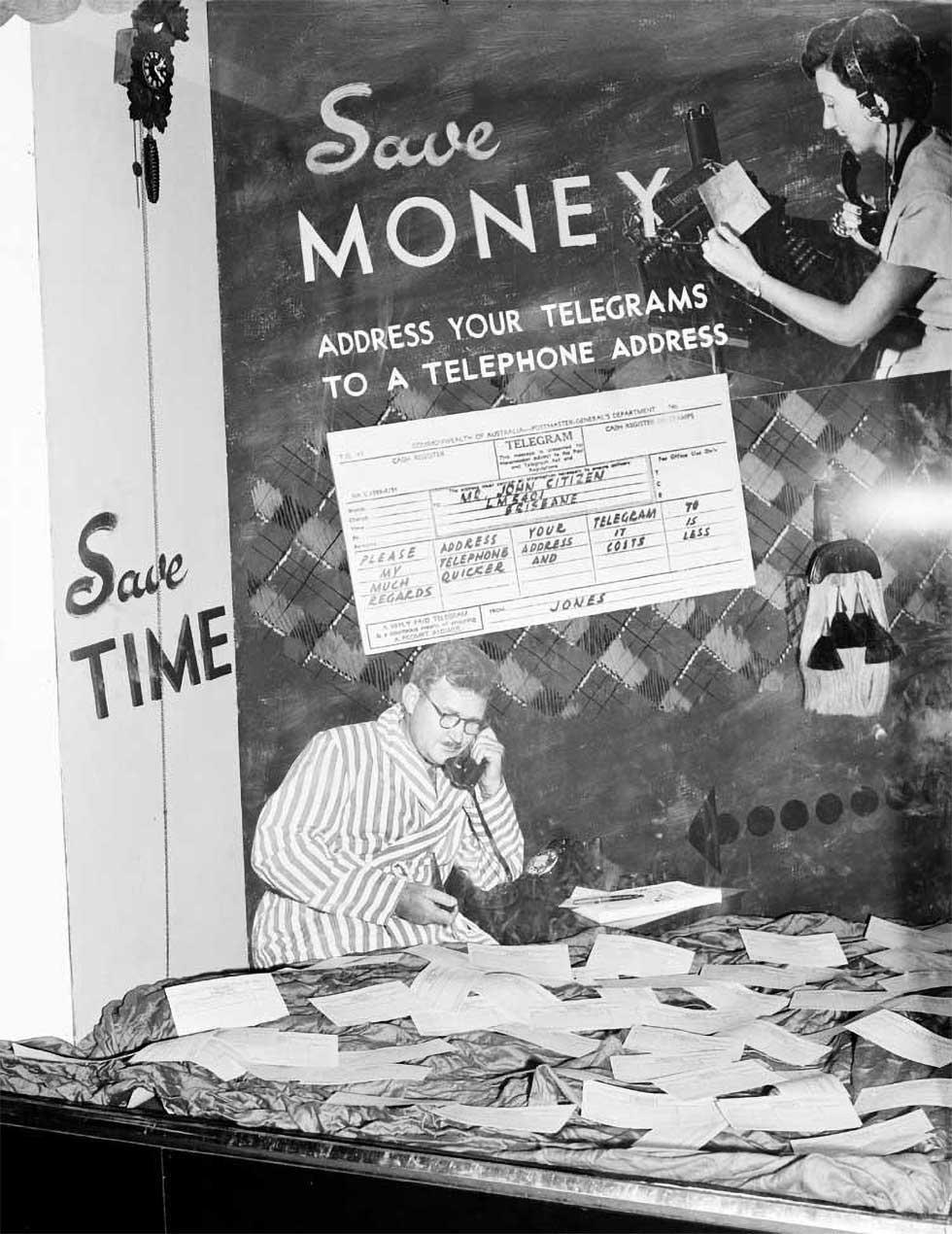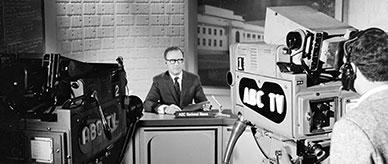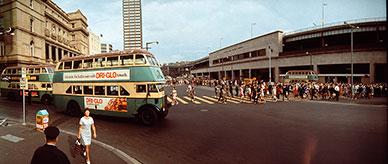


About this record
This is a black-and-white photograph of a display in the window of a Brisbane telegraph office. A large advertisement encourages people to 'Save MONEY – ADDRESS YOUR TELEGRAMS TO A TELEPHONE ADDRESS – Save TIME'.
Educational value
- Shows, in the centre of the window display, a telegram form – prior to the widespread use of telephones for immediate communication, people would use this form to write out a telegram, a message costing a certain amount per word to send; the message was transmitted from one post office to another, initially by morse code through telegraph wires but later by telephone; the transmitted message was then written out and hand-delivered to the addressee by a messenger on a bicycle.
- Captures a time of change in telegram delivery – during the 1950s, telegrams were a popular method of communication for people who did not have access to a telephone to send an important message, but the postal service identified an unnecessary expense in delivering a written message in person to someone who had the telephone installed in their business or home; it was cheaper for the postal officer to deliver the telegram's message verbally by ringing the telephone number.
- Illustrates a form of communication that has nearly vanished – telegrams were first used in Australia from 1858 when Sydney, Melbourne and Adelaide were linked by telegraph lines; the use of telegrams peaked during the 1950s, but waned after this due to the increasing number of telephones in both businesses and homes across Australia, and although telegrams may no longer be sent domestically, Australia Post continues to offer an international telegram service.
- Shows a form of advertising used widely before the advent of television in 1956 – in 1953, the goods and services were advertised through radio, newspapers and magazines, as well as the use of billboards, posters and window displays such as the one featured.
- Illustrates the work of people employed within the Drafting Section of what was then the Post Master General's Department, now known as Australia Post.
Acknowledgments
Learning resource text © Education Services Australia Limited and the National Archives of Australia 2010.
Related themes
Need help with your research?
Learn how to interpret primary sources, use our collection and more.


